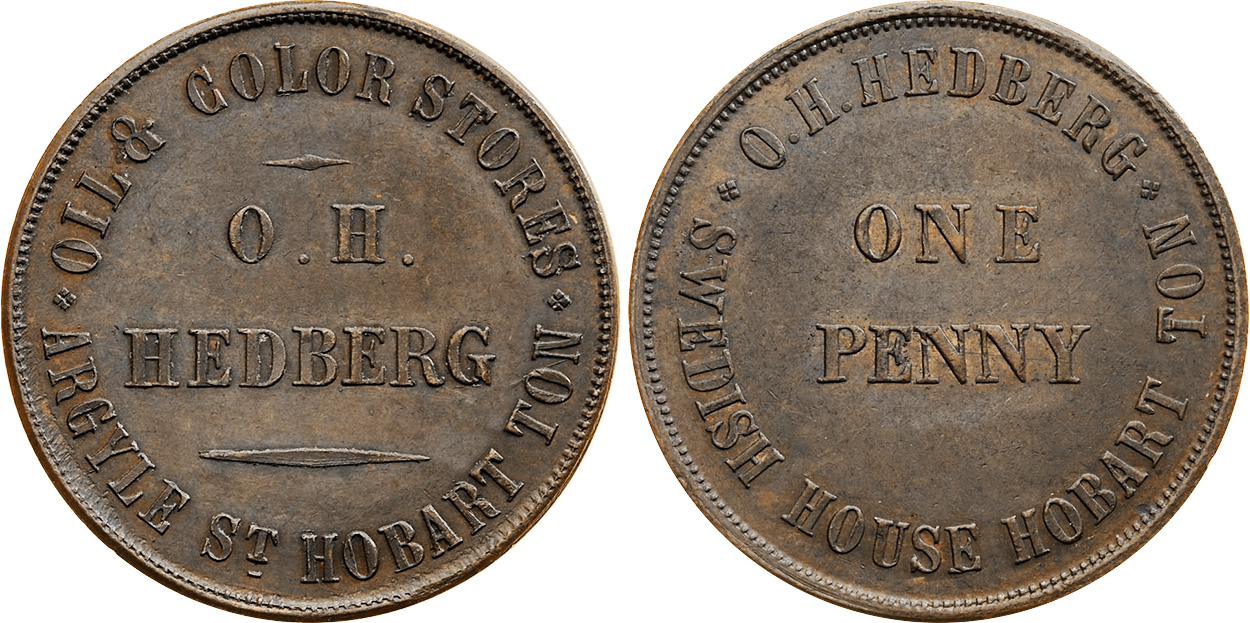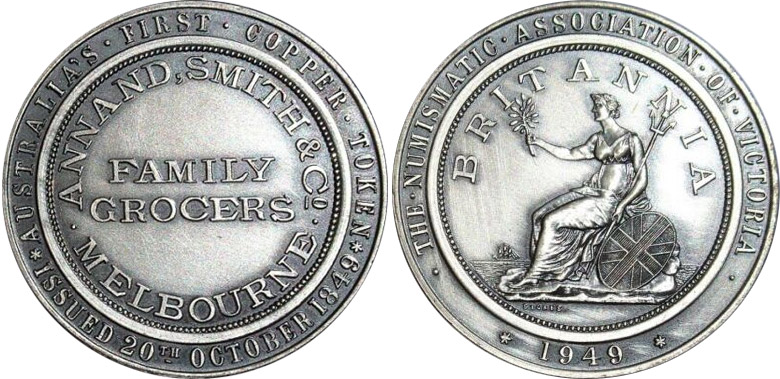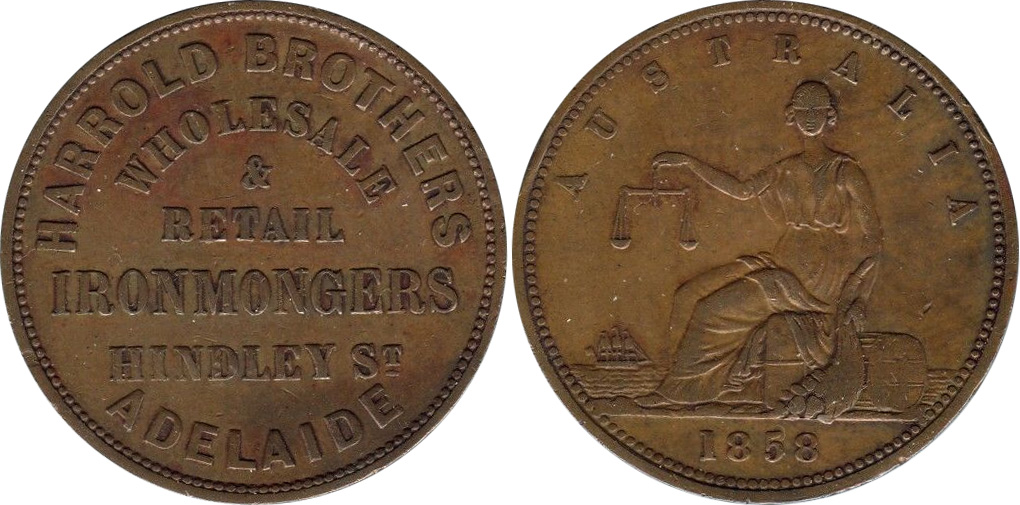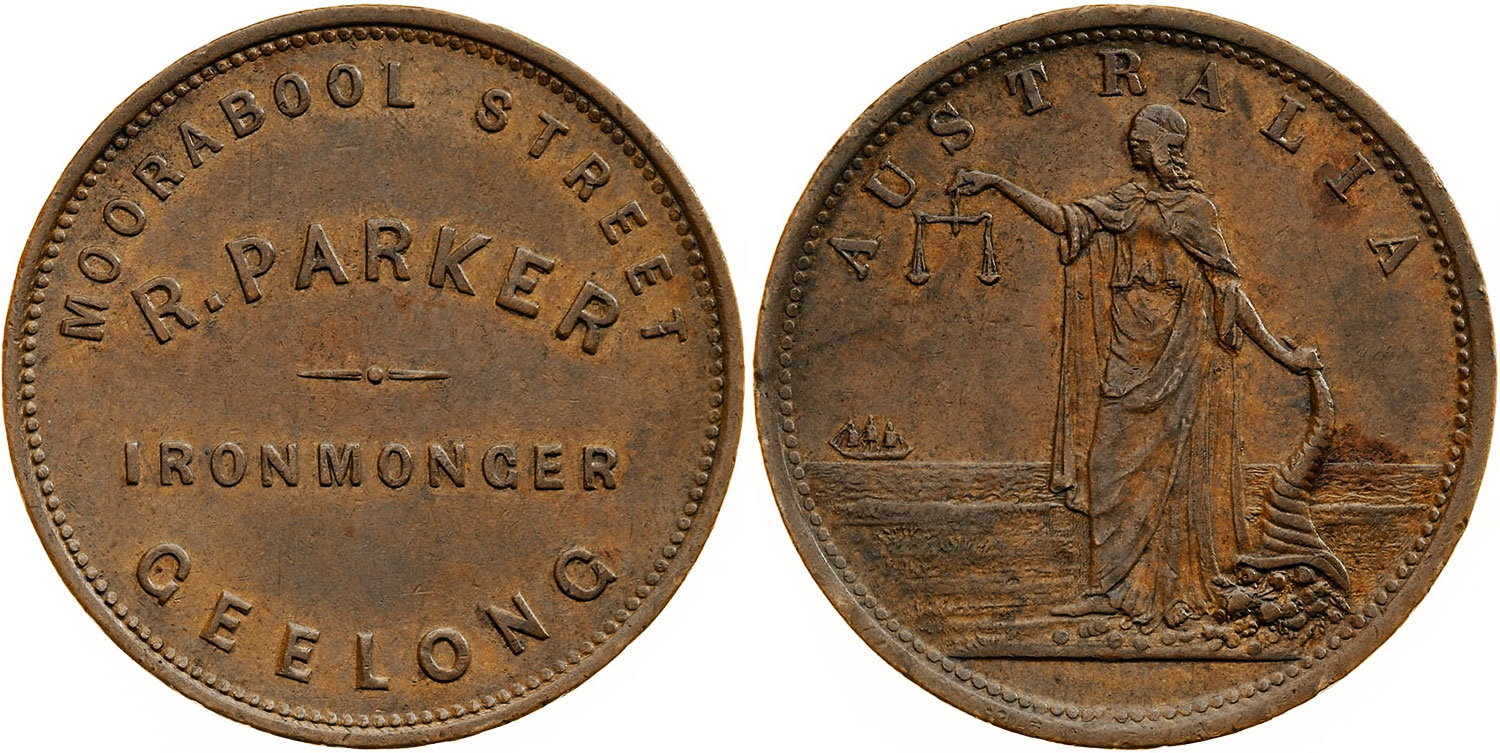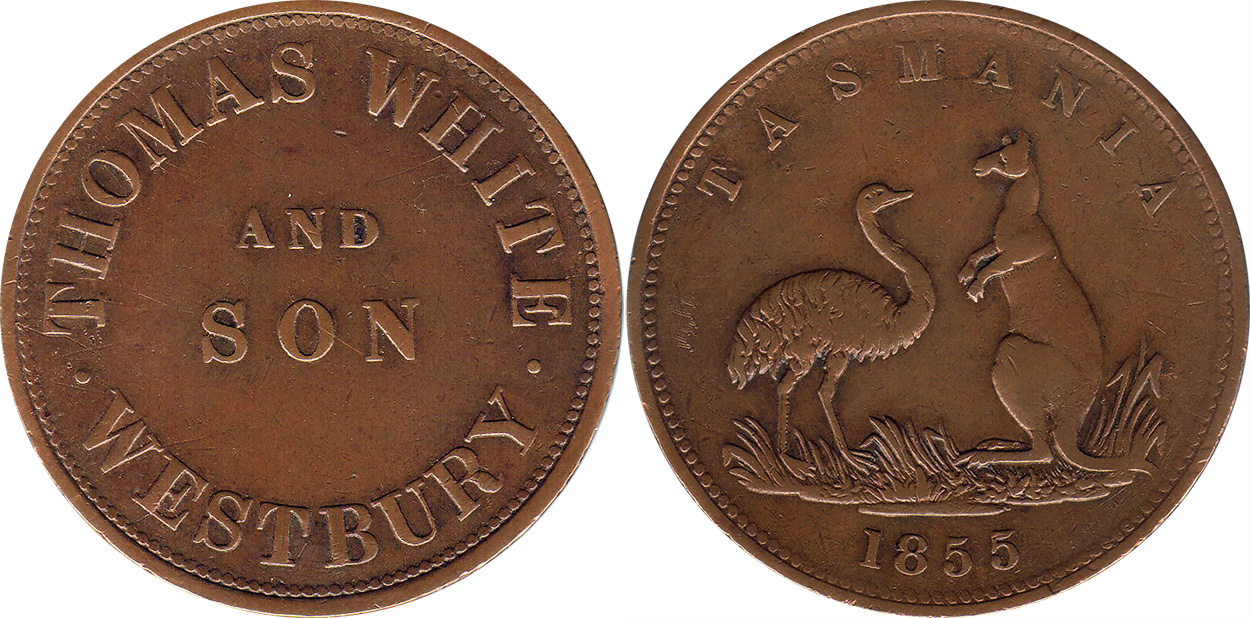Tokens of the colonies of the British Empire: Australia
By Coinsanduk | Thursday, 4 March 2021
Because the government in Britain had prohibited the colonial goverments from minting any copper or silver coins and due to a shortage of small coinage in Australia in the 19th century, several merchants ordered un-official tokens to facilitate trade.
The first Australian merchants to take the initiative and order a shipment of tokens were George Annand and Robert Smith. These tokens were also used as an advertisement for their business.
Eventually, the authorities suppressed the use of tokens which were no longer accepted for any form of payment.
Here's a short list these tokens. They all can be found on Coinsandaustralia.com.
Olof Hilmer Hedberg, Whaler & Merchant, Hobart
Olof Hilmer Hedburg was born in the Swedish town of Uddevalla, on 14 April 1817. The first mention that numismatist Roger McNeice found of him in the public record was a listing as a small merchant in Sweden between 1835 and 1843. In 1838 he went to sea and eventually arrived in Hobart, Australia in 1844.
His tokens were made by W.J. Taylor of London, although the later mules (tokens struck combining dies made for two separate issuers) are not necessarily Taylor's work. The Museum Victoria Catalogue dates the tokens to circa 1860.
Annand, Smith & Co., Grocers, Melbourne
This company of Family Grocers of Collins Street, Melbourne, issued Australia's first circulating copper tokens, on 20 October 1849, as reported in The Argus. Although the token is not inscribed with a date, this report and an order for their manufacture discovered by researchers in Birmingham, England, confirm that they were issued before the great population boom of the gold rush. It was manufactured by the Soho Mint, Birmingham - they shipped 5 hundredweight at 27.5 pieces per pound (15,400 tokens) on 23 May 1849 followed by two further shipments on 12 October 1849 and 15 January 1850, the total comming to 45,503 pieces.
In 1949, the Numismatic Association of Victoria issued a medal marking the centenary of the first Australasian token, issued by Melbourne grocers Annand Smith & Co. in 1849. One hundred of these medals were struck by Stokes & Son. The medal was launched at an exhibition held by the NAV in the National Gallery of Victoria, at which the granddaughter of George Annand spoke. This was the first of many issues by the NAV.
Harrold Brothers, Ironmongers, Adelaide, South Australia
Harrold Brothers, Ironmongers, issued penny tokens in 1858. From at least 1854 to 1871 Harrold Brothers occupied a number of premises on Hindley Street, Adelaide. The earliest reference located is from 1854, for D. & J. Harrold. The following year the brothers also advertised premises in Sturt Street. In 1857 their listing in the Royal South Australian Almanac gave their address as 127 Hindley Street.
Their tokens were struck by W.J. Taylor of London, and bear the personification of Justice on the reverse, above 'Australia/1858'.
R. Parker, Ironmonger, Geelong, Victoria, Australia, circa 1857
Richard Parker arrived in Victoria in 1839 and established a general store in Elizabeth Street with a Mr. Boadle, the partnership disolved when Boadle left Melbourne. Parker then moved Collins Street and continued his business until selling out to Germain Nicholson in 1844, when he moved to Geelong and established an ironmongery store. Parker was very successful, and opened stores in Clunes, Back Creek (Talbot), Firey Creek and Ararat.
Parker issued at least ten varieties of tokens, all with the same inscription and figure on the faces, but with slight variations. When the tokens arrived, they were emptied out in a huge pile in the window, and as small change was scare, people flocked to the shop to exchange their silver for the more convenient copper.
Parker employed Heaton & Sons, Birmingham to strike his extensive token issues. At least 9 obverse and 5 reverse dies were needed to complete the orders over three seperate issues. The dies were well made and almost identical so thast their products are somewhat difficult to differentiate.
Thomas White & Son, Grocers, Westbury, Tasmania
The store from which Thomas White issued the White and Son tokens, the White House, is still located at the corner of Lonsdale Promenade and King Street in Westbury, Tasmania. McNeice's research found that he was living in Westbury as early as 1838, and that he founded his grocery business in 1845. A land grant giving the corner block to White is dated 4 November 1841. By 1855 the site was, according to Petterwood, 'known as White's Token Store when he had some penny and halfpenny tokens made.' (Petterwood). The tokens were struck for him by Heaton and Sons of Birmingham. He left the premises in 1859. The White House (as it is known) is now on the register of the National Trust of Australia as an outstanding colonial era building.
White's tokens were struck for him by the Heaton and Sons mint, Birmingham in 1855.
Robert Hyde & Co., Merchants, Melbourne, Victoria
Hyde's Marine Store was listed in a Melbourne directory for the first time in 1862, at 11 Albert Street East Melbourne. Between 1863 and 1865 he was listed as being in a partnership with Richard Hodgson (Hyde, Hodgson & Co.) in Albert Street, Emerald Hill. In 1866 and 1867 he was once again listed at 11 Albert Street East Melbourne. In 1868 his store was listed as a Rag Merchant's business at 120 Lonsdale Street West, before becoming a Marine Store for 1869 and 1870. John Hope states that the firm's principal business was dealing in second hand and scrap goods, bottles, rags, bones and scrap metals.
The firm of Robert Hyde & Co. issued trade tokens dated 1857 and 1861. Both issues appear to be the work of Heaton & Sons, Birmingham rather than W.J. Taylor as earlier thought. Standard references and the Victoria Museum's storage are based on identification of the die combinations employed to manufacture the tokens.
Commercial tokens of Australia price guide and values »

